polycarbonate roofing
Polycarbonate Roofing: Revolutionizing Modern Construction and Beyond
Introduction
Welcome to an in-depth exploration of polycarbonate roofing, a groundbreaking material that is transforming the construction industry and beyond. This innovative technology offers a blend of strength, versatility, and sustainability, making it a preferred choice for various applications. In this comprehensive article, we will embark on a journey through the world of polycarbonate roofing, unraveling its intricacies, global impact, economic significance, technological strides, regulatory frameworks, and future potential. By the end, readers will gain a profound understanding of why polycarbonate roofing is not just a material but a catalyst for progress in architecture, engineering, and sustainable development.
Understanding Polycarbonate Roofing: Unlocking the Basics
Definition: Polycarbonate roofing refers to the use of polycarbonate materials in constructing roofs, offering an alternative to traditional roofing options. Polycarbonate is a type of thermoplastic polymer known for its exceptional optical clarity, impact resistance, and lightweight nature.
Core Components: At its heart, polycarbonate roofing comprises several key components:
-
Polycarbonate Sheets: These are the primary structural elements, available in various thicknesses and grades to cater to different load requirements. Polycarbonate is renowned for its high-impact strength and ability to resist extreme weather conditions.
-
Support Structures: Robust frames, trusses, or panels are essential to provide additional support and ensure structural integrity. These can be custom-designed to accommodate specific architectural needs.
-
Sealing Systems: Proper sealing is critical to maintain the structural integrity and energy efficiency of polycarbonate roofs. Advanced sealing technologies ensure water tightness and prevent moisture intrusion.
Historical Context: The concept of polycarbonate roofing traces back to the mid-20th century when researchers sought lightweight, durable alternatives for construction. Polycarbonate, initially developed as a material for optical lenses, soon found its way into architectural applications due to its remarkable properties. Over time, advancements in manufacturing techniques and design possibilities have expanded its use cases significantly.
Significance: Polycarbonate roofing offers numerous advantages:
-
Lightweight and Easy Installation: Compared to traditional materials like concrete or steel, polycarbonate is significantly lighter, making it easier to install and reduce overall structural loads.
-
Exceptional Transparency: Its optical clarity allows for the maximum passage of natural light, enhancing interior spaces and reducing the need for artificial lighting.
-
Enhanced Energy Efficiency: Polycarbonate’s insulating properties contribute to better temperature regulation within buildings, leading to reduced energy consumption for heating and cooling.
-
Durability and Low Maintenance: Resistant to corrosion, impact, and UV damage, polycarbonate roofing requires minimal maintenance, ensuring long-term cost savings.
-
Sustainability: Derived from renewable resources, polycarbonate is a more environmentally friendly option compared to some traditional building materials.
Global Impact and Trends Shaping the Future
International Influence: Polycarbonate roofing has left an indelible mark on the global construction landscape. Its adoption varies across regions, influenced by factors such as climate, architectural preferences, and local regulations:
-
Europe and North America: These regions have been early adopters, with extensive use in commercial buildings, greenhouses, and residential applications. Strict energy efficiency standards drive the demand for polycarbonate’s insulating properties.
-
Asia-Pacific: The rapid urbanization and construction boom in countries like China and India have led to increased adoption. Polycarbonate roofing is favored for its cost-effectiveness and speed of installation.
-
Middle East and Africa: In regions with extreme climates, polycarbonate provides a solution for temperature control. It is also used extensively in large-scale commercial projects.
Key Trends: Several trends are shaping the future of polycarbonate roofing:
| Trend | Description | Impact |
|---|---|---|
| Smart Buildings Integration | Incorporating IoT sensors and intelligent controls to optimize energy efficiency and roof performance. | Enhances building automation, improves comfort, reduces operational costs. |
| Sustainable Building Practices | Increasing focus on eco-friendly materials and designs, with polycarbonate meeting both criteria. | Reduces carbon footprint, promotes circular economy, aligns with green building standards. |
| Customized Design Possibilities | Advancements in manufacturing allowing for complex geometric shapes and unique design elements. | Offers architects and designers greater creative freedom, creates visually stunning structures. |
| Enhanced Security Features | Incorporating impact-resistant polycarbonate sheets to enhance structural security against natural disasters and criminal activity. | Provides improved safety, protects valuable assets, reduces insurance costs. |
Economic Considerations: A Driving Force
Market Dynamics: The global polycarbonate roofing market is dynamic and growing, driven by the increasing demand for energy-efficient and sustainable construction solutions. According to a 2022 report by Market Research Future (MRFR), the market is projected to reach USD 5.1 billion by 2027, growing at a CAGR of 7.2% during the forecast period (2020-2027).
Investment Patterns: The adoption of polycarbonate roofing often attracts significant investments, particularly in commercial and industrial projects. Governments and private entities are increasingly allocating funds for infrastructure development, driving the market growth. For instance, the increasing focus on smart cities and sustainable urban planning in many countries has boosted polycarbonate roofing installations.
Economic Systems and Impact: Polycarbonate roofing’s economic significance is multifaceted:
-
Cost Efficiency: It offers a cost-effective solution compared to traditional materials, especially for large-scale projects. The speed of installation and reduced labor costs contribute to overall project economies.
-
Job Creation: The industry supports various sectors, including manufacturing, construction, and technology, leading to job generation and skill development.
-
Export Potential: With its unique properties, polycarbonate roofing has significant export potential, particularly from regions with robust manufacturing bases.
Technological Advancements: Pushing Boundaries
Innovations in Polycarbonate: The field of polycarbonate roofing is witnessing several technological breakthroughs that are transforming its capabilities:
-
Coating Technologies: Advanced coatings enhance the performance of polycarbonate sheets by improving their UV resistance, thermal properties, and aesthetic appeal.
-
Composite Materials: Combining polycarbonate with other materials like fiberglass or carbon fiber creates composites with enhanced structural integrity and design flexibility.
-
3D Printing Applications: 3D printing techniques allow for the rapid prototyping and customization of polycarbonate components, opening doors to innovative architectural possibilities.
Impact on Performance: These advancements have led to:
-
Improved Durability: Enhanced UV stability ensures longer lifespans for polycarbonate roofs, reducing replacement costs.
-
Better Thermal Management: Specialized coatings and composite materials improve thermal insulation, contributing to energy efficiency.
-
Enhanced Design Versatility: 3D printing enables the creation of intricate designs, allowing architects to push creative boundaries.
Policy and Regulation: Navigating the Legal Landscape
Key Policies and Frameworks: The development and deployment of polycarbonate roofing are guided by various policies and regulations worldwide, ensuring safety, sustainability, and quality:
-
Building Codes: Local building codes often dictate minimum requirements for roofing materials, including impact resistance and thermal insulation standards. Compliance is mandatory.
-
Environmental Regulations: Strict environmental guidelines govern the production and disposal of polycarbonate to minimize ecological impact. Recycling initiatives are encouraged.
-
Safety Standards: Safety regulations focus on preventing roof failures and ensuring the structural integrity of buildings. Testing and certification processes verify polycarbonate’s performance.
Regulatory Influence: These policies significantly impact:
-
Material Specifications: They dictate the technical specifications of polycarbonate roofing, influencing product design and manufacturing practices.
-
Market Access: Compliance with safety and environmental standards is essential for manufacturers to enter new markets or expand their reach.
-
Consumer Protection: Strict regulations ensure that consumers receive high-quality, safe, and durable products, fostering market trust.
Challenges and Criticisms: Overcoming Obstacles
Main Concerns: Despite its numerous advantages, polycarbonate roofing faces several challenges and criticisms:
-
Initial Cost: The upfront cost of polycarbonate roofing systems can be higher compared to traditional alternatives, posing a barrier for budget-constrained projects.
-
Limited Lifespan in Extreme Conditions: While durable, polycarbonate may not withstand extreme environmental conditions, such as heavy snow or harsh hurricanes, without additional reinforcement.
-
Recycling and Disposal: Effective recycling mechanisms are still evolving, raising concerns about the long-term environmental impact of polycarbonate waste.
Proposed Solutions: To address these issues:
-
Financing Options: Offering flexible financing plans can make polycarbonate roofing more accessible to a broader range of projects. Government incentives and grants can also promote its adoption.
-
Enhanced Design for Extreme Climates: Customizing polycarbonate roofs to suit specific climates through advanced engineering can improve their performance in challenging environments.
-
Improved Recycling Infrastructure: Developing efficient recycling systems and promoting circular economy practices will ensure sustainable management of polycarbonate waste.
Case Studies: Real-World Applications and Lessons Learned
Case Study 1: The Greenhouses of Europe
In the heart of Europe, a series of advanced greenhouse complexes have embraced polycarbonate roofing. These structures house delicate plant species, requiring controlled climate conditions. Polycarbonate’s exceptional transparency and insulation properties provide the ideal environment, leading to improved crop yields and year-round cultivation. The case highlights how polycarbonate roofing can contribute to sustainable agriculture, enabling food production independence.
Case Study 2: Smart City Infrastructure in Singapore
Singapore’s ambitious smart city initiative includes the adoption of polycarbonate roofing for its iconic buildings and infrastructure. The technology is utilized for its energy efficiency and ability to integrate IoT sensors. By monitoring roof temperatures and optimizing natural lighting, the city has reduced energy consumption significantly. This case underscores polycarbonate’s role in creating sustainable and technologically advanced urban environments.
Lessons Learned:
-
Customization for Specific Needs: Different applications require tailored polycarbonate solutions. Customization ensures optimal performance, leading to satisfied customers.
-
Sustainability Focus: Embracing eco-friendly materials and designs not only benefits the environment but also aligns with consumer preferences and regulatory demands.
-
Technological Integration: Polycarbonate’s compatibility with smart building technologies opens doors to innovative urban planning and improved quality of life.
Future Prospects: Charting New Courses
Emerging Trends: The future of polycarbonate roofing is brimming with exciting possibilities:
-
Micro-Solar Cells Integration: Incorporating micro-solar cells within polycarbonate sheets can harness renewable energy, making roofs even more sustainable.
-
Biophilic Design: Polycarbonate’s transparency allows for the implementation of biophilic design principles, bringing natural elements into built spaces.
-
Smart Shading Systems: Advanced shading technologies integrated with polycarbonate roofing will enable dynamic control over lighting and temperature.
Growth Areas: Several sectors are poised to benefit from polycarbonate roofing:
-
Residential and Commercial Retrofits: The growing demand for energy efficiency in existing buildings presents a significant market opportunity for polycarbonate retrofits.
-
Infrastructure Development: Government initiatives focusing on road, bridge, and tunnel construction will require durable and sustainable roofing solutions, driving polycarbonate adoption.
-
Greenhouse and Agricultural Applications: With the global push for sustainable agriculture, polycarbonate roofing is expected to see increased use in greenhouses and controlled-environment farming.
Conclusion: Shaping a Sustainable Future
Polycarbonate roofing has emerged as a transformative force in construction and beyond, offering solutions that balance aesthetics, functionality, and sustainability. Its global impact, technological advancements, and regulatory support underscore its importance as a material of choice for modern architecture and engineering. As the world navigates the challenges of climate change and urban growth, polycarbonate roofing is poised to play an increasingly vital role in creating sustainable, resilient, and technologically advanced environments.
FAQ Section: Answering Common Queries
Q: Is polycarbonate roofing suitable for all climates?
A: While polycarbonate offers excellent performance in many climates, its suitability depends on local conditions. For extreme weather, customized designs and additional structural support may be required.
Q: How easy is the installation of polycarbonate roofing?
A: Polycarbonate roofing systems are designed for efficient installation, often requiring less labor than traditional methods. However, professional expertise ensures proper sealing and structural integrity.
Q: Are there any maintenance requirements for polycarbonate roofs?
A: Regular cleaning and inspection are recommended to maintain optimal performance. Simple maintenance routines ensure the longevity of polycarbonate roofing systems.
Q: Can polycarbonate roofing contribute to energy savings?
A: Absolutely! Polycarbonate’s insulating properties significantly reduce heating and cooling costs, leading to substantial energy savings over time.
Q: How does polycarbonate roofing impact the environment?
A: Despite being derived from non-renewable resources, advanced manufacturing processes have minimized polycarbonate’s environmental footprint. Recycling initiatives further promote its sustainable use.

Bendigo Residents Choose Steeline’s Durable Polycarbonate Roofs
Bendigo residents prefer Steeline for their durable and reliable polycarbonate roofs, which offer superior impact resistance, weather protection, and long-term…
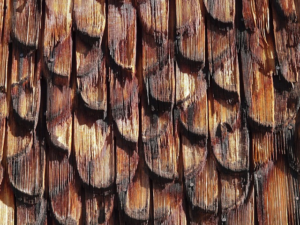
Elevate Your Home with Custom Polycarbonate Roof Designs
Polycarbonate roofs in Bendigo offer modern, aesthetically pleasing solutions for homeowners, featuring customizable designs, energy efficiency, and eco-friendly properties. These…

Steeline Bendigo: Cool Roofs for Eco-Friendly Homes
Steeline Roofing Centre Bendigo offers energy-efficient polycarbonate roofing systems, reducing cooling costs and environmental impact with superior insulation, heat retention,…

Polycarbonate Roofing: Bendigo’s Harsh Climate Solution
Bendigo's diverse climate demands robust roofing solutions. Polycarbonate roofing excels with UV resistance, durability, and insulation, offering a tailored protection…

Polycarbonate Roofing: Cool, Efficient, Eco-Friendly Homes Bendigo
Polycarbonate roofing in Bendigo enhances home comfort and energy efficiency with superior thermal insulation, blocking heat transfer while allowing natural…
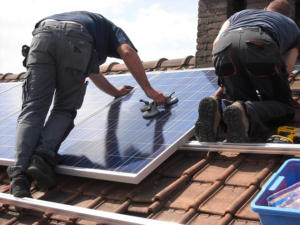
Revolutionize Industrial Spaces with Commercial Polycarbonate Roofs
Polycarbonate roofs in Bendigo offer exceptional durability, natural light transmission, and energy efficiency. They outperform traditional materials with impact resistance,…
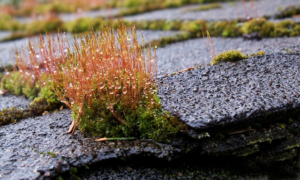
Steeline Bendigo: Impact-Resistant Polycarbonate Roofing Experts
Steeline Roofing Centre Bendigo specializes in polycarbonate roofing, providing durable, impact-resistant solutions for residential and commercial projects. Their expertise offers…

Polycarbonate Roofs: Energy Efficient Thermal Insulation Solution Bendigo
Polycarbonate roofs are an eco-friendly, energy-efficient thermal insulation option, offering superior warmth retention in cold months and cooling in summer.…

Storm-Resistant Polycarbonate Roofing for Bendigo Homes
Polycarbonate roofing is revolutionizing home protection in Bendigo with superior strength against harsh weather conditions. Its impact resistance, lightweight yet…

Revolutionize Bendigo Industrial Spaces with Polycarbonate Roofs
Commercial-grade polycarbonate roofs in Bendigo offer durability, versatility, and aesthetics for industrial projects. They enhance natural light, boost productivity, and…

Steeline Bendigo: Modern Polycarbonate Roofs for Heritage Homes
Steeline Bendigo offers custom polycarbonate roofs for residential and commercial properties, merging historical charm with modern convenience. Their expertise lies…
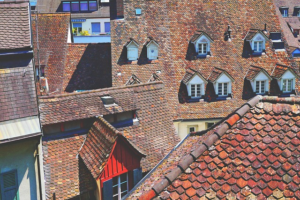
Steeline Roofing Bendigo: Storm-Resistant Polycarbonate Solutions
Steeline Roofing Centre Bendigo offers robust polycarbonate roofing solutions for harsh local weather conditions. Their impact-resistant materials and excellent insulation…
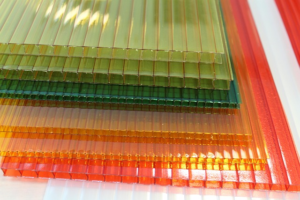
Steeline Bendigo: Transparent Polycarbonate Pricing Unveiled
Steeline Roofing Centre Bendigo offers transparent pricing for polycarbonate projects, providing detailed cost breakdowns and accurate quotes tailored to client…
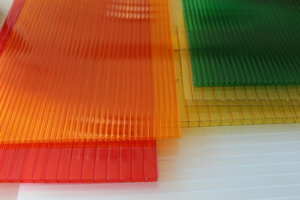
Steeline Roofing Bendigo: Energy-Saving Polycarbonate Solutions
Steeline Roofing Centre Bendigo offers energy-efficient polycarbonate roofing solutions with superior thermal performance and insulation. These lightweight, durable panels reduce…

Modernize Spaces with Polycarbonate Roofs: Steeline Bendigo’s Expertise
Polycarbonate roofs revolutionize modern architecture with their exceptional versatility, strength, and light transmission. They offer unique designs, superior insulation, energy…

Steeline Bendigo: Polycarbonate Roofing for Heritage Homes
Steeline Bendigo offers polycarbonate roofing solutions for heritage homes, combining historical preservation with modern technology. Their expert team creates durable,…

Storm-Resistant Polycarbonate Roofs: Bendigo Homes’ Protection
Polycarbonate roofs offer Bendigo homeowners superior storm protection, impact resistance, and insulation benefits. High-quality commercial-grade sheets ensure durability against intense…

Polycarbonate Roofs: Efficient Thermal Insulation for Steeline Bendigo
Polycarbonate roofing is a revolutionary sustainable building material, offering superior thermal insulation and energy efficiency. Steeline Bendigo leads the way…
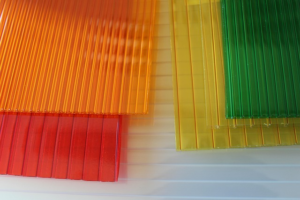
Polycarbonate Roofing: Steeline Bendigo’s Revolutionary Blend of Durability and Design
Polycarbonate roofing is Steeline Bendigo's top choice for its durability, impact resistance, and insulation properties. This material offers design flexibility,…

Affordable Polycarbonate Roofs: Steeline Warranties & Installation Secrets
Polycarbonate roofs are durable, affordable, and energy-efficient, with excellent insulation and natural light penetration. Steeline offers comprehensive warranties, ensuring long-term…